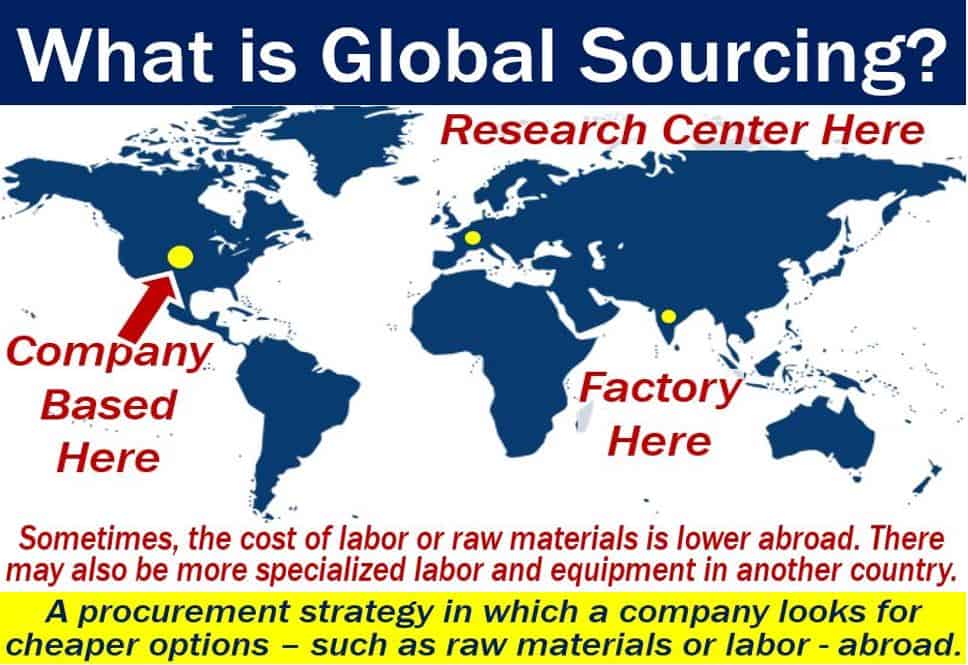Global Sourcing refers to seeking goods and services beyond one’s borders, i.e., from the global market. It is a procurement strategy in which companies try to find the most cost-efficient place globally for manufacturing goods. According to purchasing and procurement professionals, companies should be able to source both inside and outside their national borders. They are then subsequently better able to compete.
Most companies choose a global sourcing strategy because costs are lower abroad. Either labor costs or raw material costs are lower. Often, both raw material costs and wages are lower.
The term ‘offshoring‘ means outsourcing with a foreign provider. ‘Outsourcing‘ means farming out work to a third party supplier, i.e., not doing the work in-house.
Global sourcing – the international marketplace
As demand grows internationally for better and more goods and services, competition becomes fiercer.
Businesses have to keep up with the rapid pace of technology advancement. At the same time, however, they need to keep costs down and optimize quality.
Additionally, companies strive to improve customer services along the whole value chain. For most companies today, this is the reality of the international marketplace, i.e., international trade.

In fact, many business experts say that without global sourcing, most companies are giving a competitive edge to their rivals.
Opening a shoe factory in Thailand or a call center in India are examples of global sourcing.
Global sourcing – young companies
Using an outsource solution is becoming increasingly common, especially for young companies.
They often use IPOs as agents to source from countries with lower costs. IPO stands for International Procurement Organization.
Digital platforms and online marketplaces are playing an increasingly pivotal role in global sourcing, enabling companies to connect with suppliers and manage procurement processes more efficiently.
IPOs find and develop important suppliers across a wide range of sourcing categories. In fact, they can source from small and simple economies, such as Belize, to large and complex ones, like India, Brazil, or China.
Global sourcing – pros and cons
Seeking a global sourcing strategy has many benefits. However, as is the case with most business strategies, there are also disadvantages.
Pros
- You can learn how to succeed in a new market.
- Your company may find new business contacts, and maybe even new customers, abroad.
- If you find a new and cheaper supplier, you can compete against your rivals more effectively.
- Finding new suppliers means you become less reliant on just one or two.
- You may be better able to increase your company’s technical capabilities by doing business abroad. There might also be an opportunity to increase manufacturing capacity.
Cons
- Hidden costs related to the time and effort employees spend learning about different countries are higher. For young companies, especially, these hidden costs may be high.
- Your company runs the risk of having legal problems abroad.
- Doing business abroad may also come with financial and political risks. In the emerging economies especially, the risk tends to be higher.
- Your intellectual property is at greater risk when you adopt a global sourcing strategy. Intellectual property refers to patents, trademarks, slogans, etc.
Sustainable global sourcing is becoming a key consideration, as companies are not only looking for cost efficiency but also aiming to meet environmental and social responsibility standards.
